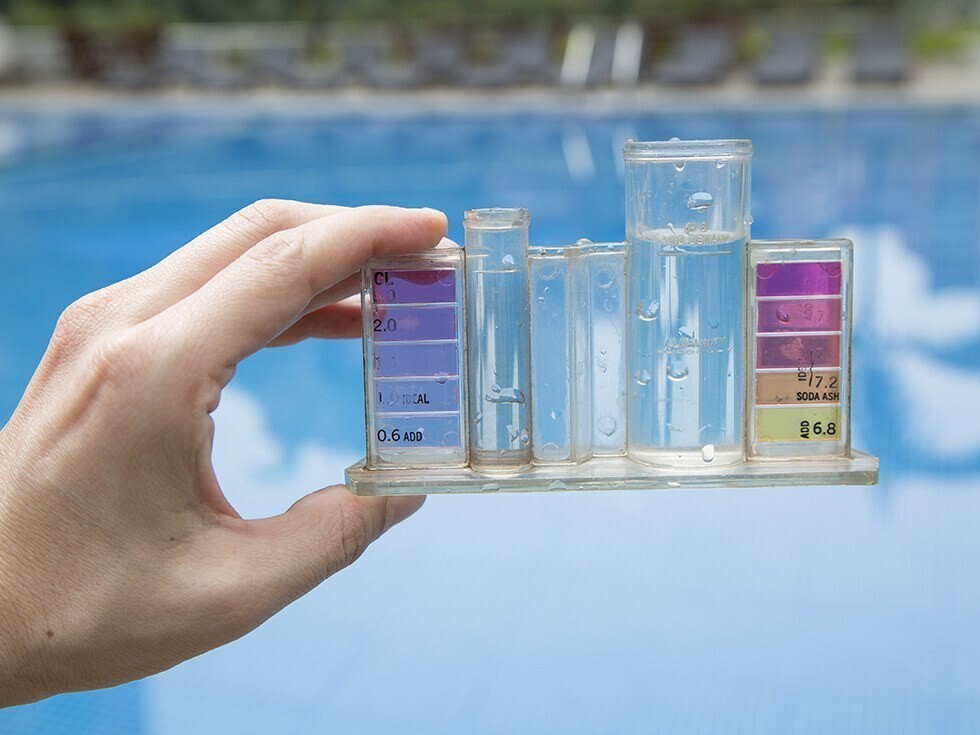It’s getting warmer outside, and that means it’s almost swim season! Opening your pool for the year is a straightforward process, but it can be intimidating – especially if you’re new to pool ownership. Let our simple guide walk you through opening your pool so you can enjoy as much of the swimming season as possible.
Start With the Cover
Remove your pool cover first. If you have a solid or otherwise heavy one, this may require two people. Don’t worry if water and debris fall into the pool; you’ll take care of these issues while cleaning. That said, be cognizant of how much debris goes into your pool. If you have a mesh cover, you’ll probably see more debris than with a solid one. Allow for extra cleaning time in your schedule, and double-check that dirt and debris are completely cleaned out.
Once the cover is removed, clean it using talcum powder or a specialty cleanser to prevent mold and mildew. Fold the cover and store it in a cool, dry area.
Raise Water Levels
Typically, a pool’s water level is about halfway up the tile or the middle of its skimmer opening. Use a garden hose to get the water back to normal level. Do not apply pool chemicals until level  raising is complete. Do not rely on winter precipitation to raise water levels; although “natural,” that water is stagnant and most likely dirty.
raising is complete. Do not rely on winter precipitation to raise water levels; although “natural,” that water is stagnant and most likely dirty.
Remove Plugs and Reconnect Equipment
Most pool owners use winterizing equipment such as plugs on their filters, pumps, and heaters. Remove and store each plug, and carefully reconnect pool equipment. If you have an above-ground pool, reconnect plumbing lines to the equipment and skimmer. Only when the equipment and plumbing lines are reconnected can you turn the pool’s system back on. Once it is on, allow time for the filter to thoroughly clean the water.
Run a Chemistry Test
Finally, check the pool’s pH, alkalinity, and chlorine levels before letting anyone swim. Only do this if your circulation system has run for several hours. Your pool’s pH should be between 7.4 and 7.6, and alkalinity levels should be 80 to 120 ppm. Chlorine levels should be no higher than 2.0 to 4.0 ppm; any higher and you run the risk of chlorine poisoning.
